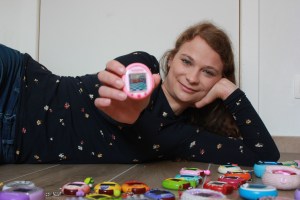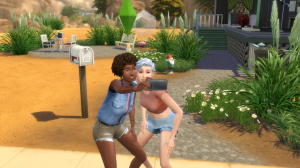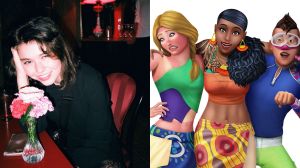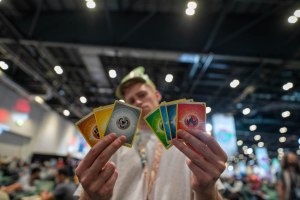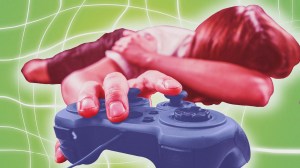“All they do is eat and shit! How many times do I have to kill this game before it will die?!’” This is what one senior executive at video company EA Games apparently snapped in the late 90s, according to art director Charles London, after yet another underwhelming demonstration of The Sims.
Others were equally sceptical. New ideas are often met with resistance and The Sims was no different. While city-building video game SimCity had been hugely popular throughout the 90s, many gaming traditionalists simply couldn’t understand the appeal of its people-oriented spin-off. Why on earth would anybody want to build a fake house, create fake people and then just… watch them live and die?
During a long and frequently arduous development process, the game encountered plenty of doubters, but the small, quirky and dedicated Maxis team, led by founder and lead designer Will Wright, grasped the uniquely open-ended potential of their latest creation. It was weird, yes, but people like weird, and they especially like dreaming up imaginary lives for themselves.
That said, even the game’s biggest advocates still couldn’t have envisaged the extraordinary level of success The Sims would go on to have. Inundated with awards and acclaim, it’s become one of the biggest-selling and most influential games of all time. It also broke new ground by reaching a majority audience of young women, very different to gaming’s traditional demographic.
The series, which now features four instalments and countless expansion packs, has shifted more than 200 million units and left a significant cultural footprint. Several of the world’s biggest pop stars, from Ariana Grande to Jason Derulo, have even recorded songs in Simlish, the game’s own garbled language.
The Sims enjoys a loyal fanbase and a remarkable legacy. A generation of players were afforded an unprecedented level of control and creative freedom. Some sought prosperity, others destruction. Lavish houses were constructed and ladders removed from pools, leaving family and friends to drown.
Videos by VICE
As The Sims 4 is made free to play from the 18th of October, we remember where it all started. This is the story of the original Sims game, finally released in 2000 – how it came about, the obstacles it faced along the way and why it proved so popular, as told by the people responsible for bringing it to life.
The beginnings of ‘The Sims’

Charles London [art director]: The game was born out of Will [Wright]’s experience of having to rebuild his entire life, having lost his home in the Oakland Hills fire. That’s where his explorations began, which were about home design, object design and efficiency.
It was a passion project for Will. The concept was so esoteric that nobody really thought it was going to be a thing. It was just something that Will was doing that they were going to let him do because he was Will Wright.
Claire Curtin [designer and voiceover director]: The original idea that Will had was that it was a virtual dollhouse. He was very influenced by a book called A Pattern Language by Christopher Alexander. It was really a time management game about how you could move your Sims throughout the house in the most efficient manner.
Jamie Doornbos [programmer]: [Will] just has so many great ideas and he reads a lot. He talked about Tamagotchis a lot. They were really popular in Japan and people really wanted their Tamagotchis to survive. One day he brought a bunch of Tamagotchis to the office and gave everybody one.
Will went to my manager and asked if he could spare a developer to work on this secret project. I was the first official developer on The Sims other than Will. He used to write a lot of code. I was very junior. I had no idea what the proper way was to develop all of this stuff, so I was just doing it however I saw fit.
We were like a student and a teacher. I was learning from him and making his code a little less hardwired and hacky. I could clearly see that Will was a design genius, so I had faith in him even if I didn’t see exactly how the game was going to work.
Developing the concept
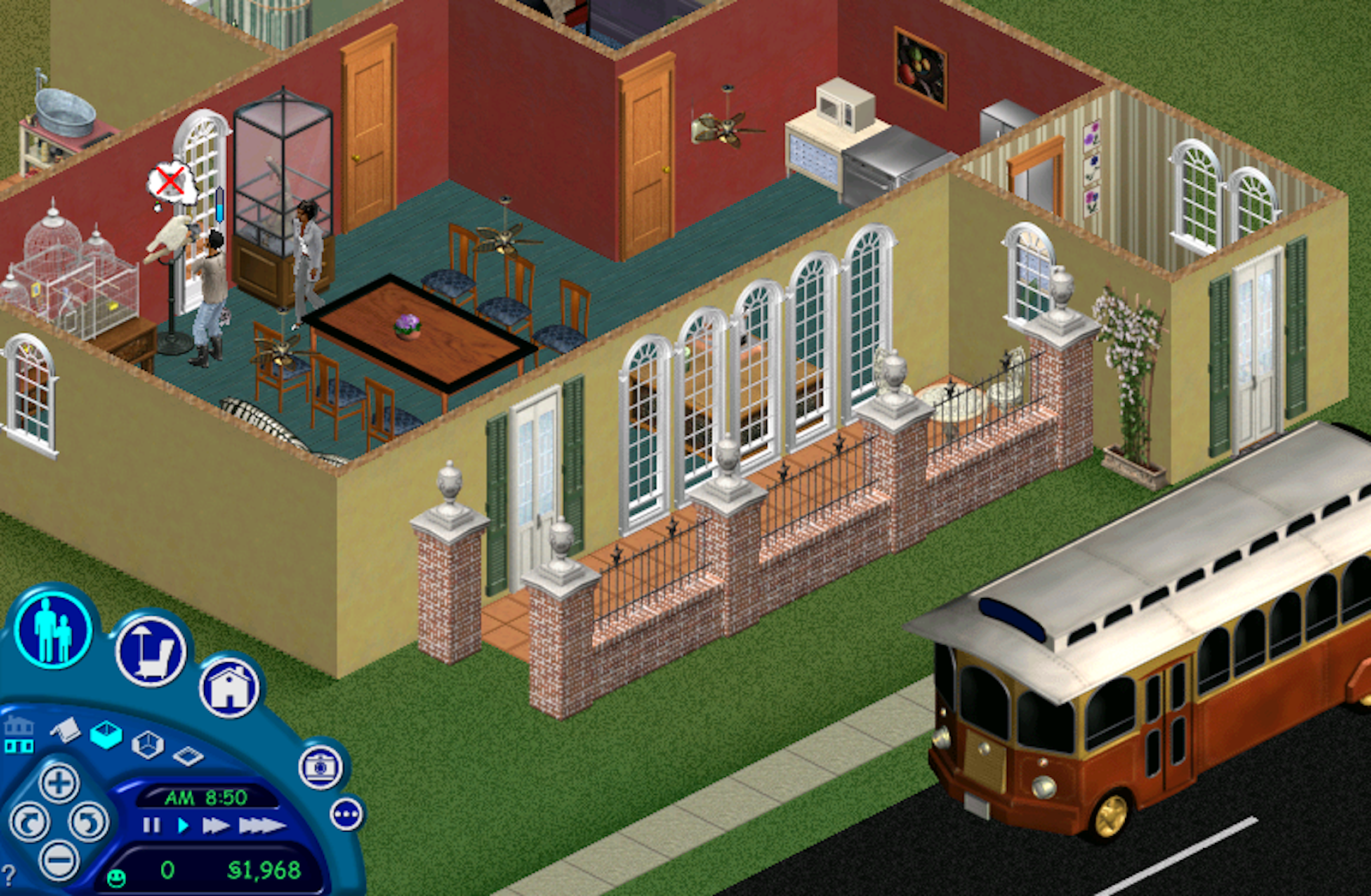
Curtin: The animation system of The Sims was all built from the ground up, so we didn’t get to borrow a lot, in terms of code, from other games. Getting from the genesis of the game to the one that was published was just so much hard work.
London: The “people” were not the centre of the game [at first]. It was an architecture game. Will’s concept was that the people would bounce around the environment as a signifier of the efficient choices you made on object placement and room design. He used to call it the “human pinball machine”. It wasn’t until two designers joined the game – Roxy Wolosenko and Claire Curtin – that they convinced Will it was going to have to be about the people.
Roxy Wolosenko [designer]: He showed me the object placement tool one day. I remember just sitting there, looking at it. It was cool, but I thought, ‘Actually, who are those people? What’s their relationship to each other?’ You immediately begin to anthropomorphise these little creatures. That started this whole new line of thinking.
Doornbos: Will came up with the core simulator, which was basically just a little window with eight bars in it that corresponded to the core motives of people. There was a social motive, a hunger motive and a bladder motive. You could play with it and change the parameters. We started focusing on behaviour, but it was always there as a goal.
Wolosenko: We were trying to distil human interactions into something you could model. It was a real challenge. No one had ever done that before. It was a multiple year process and it evolved.
As we revised the game, we built in different types of goals. So, if you want your Sim to be an artist, you have to build up their artistic slider by having them paint. The objects were all designed to either decrease your needs or help your aspirations. We did play with the idea of goals like ‘you need to make x amount of money’ but that’s so trite.
Kana Ryan [producer]: From a code perspective, it was easier to do the game in a way that was gender neutral. We weren’t trying to make a statement, but I love that it did. It was a game that really just allowed that freedom. It wasn’t as if certain jobs or interactions were only available to female characters, so inherently you’ve levelled the playing field. You’ve just created an environment that’s equal.
The art and animation of ‘The Sims’
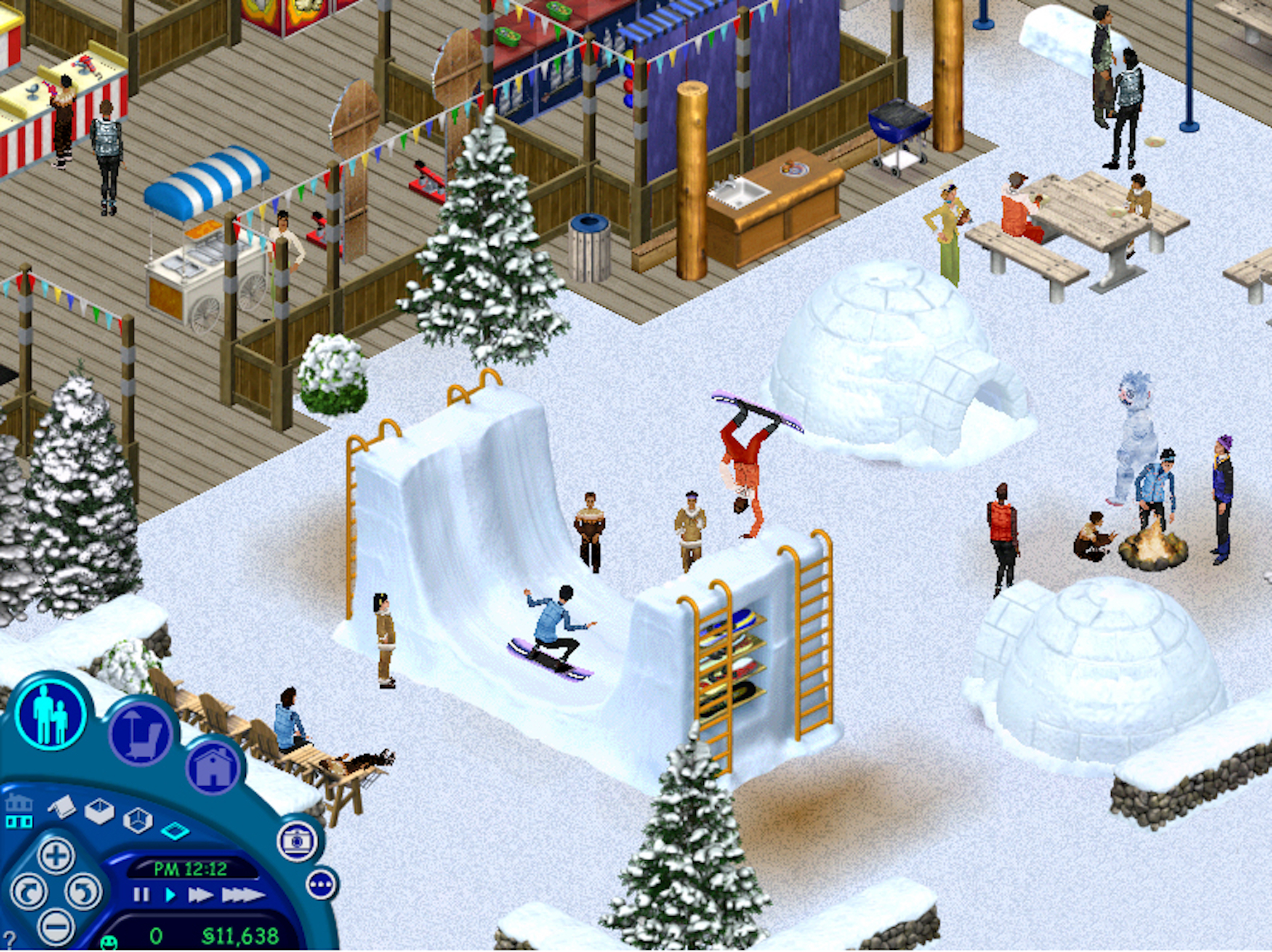
London: We were very lucky to have a tremendously talented art team. The way the characters ultimately look is the work of Eric Chin, who is still the lead character artist. He’s been doing it for 25 years. Eric Hedman did most of the animations and brought his comic, clowny personality to that. Jami Becker did the majority of the actual modelling. I did the user interface.
We went through a bunch of iterations about how we wanted players to feel about this place: Is it a real place? Is it a dollhouse? We didn’t necessarily want players to feel like gods and we didn’t necessarily want this world to feel like toys, so we focused on a miniature art style that had sufficient detail for you to suspend your disbelief.
After a while we realised that humour was our way out of all manner of tight spots. Like, the Sims needed to dance but we couldn’t animate all the dances so we animated a quirky, weird dance that they would do. And there were parts of life that were so complex or taboo that we had to abstract them with simple, symbolic behaviours and we made those funny.
Wolosenko: In coming up with the inspiration for their interactions, I happened to go to this really funny mime show on Broadway in San Francisco. There were two excellent mimes who we got to come in for a couple of days. We had created pages and pages of interactions with an emotional flavour to them. They mimed these things, and we filmed them and that ended up being the basis for a lot of the graphics that we did.
The iconic green diamond
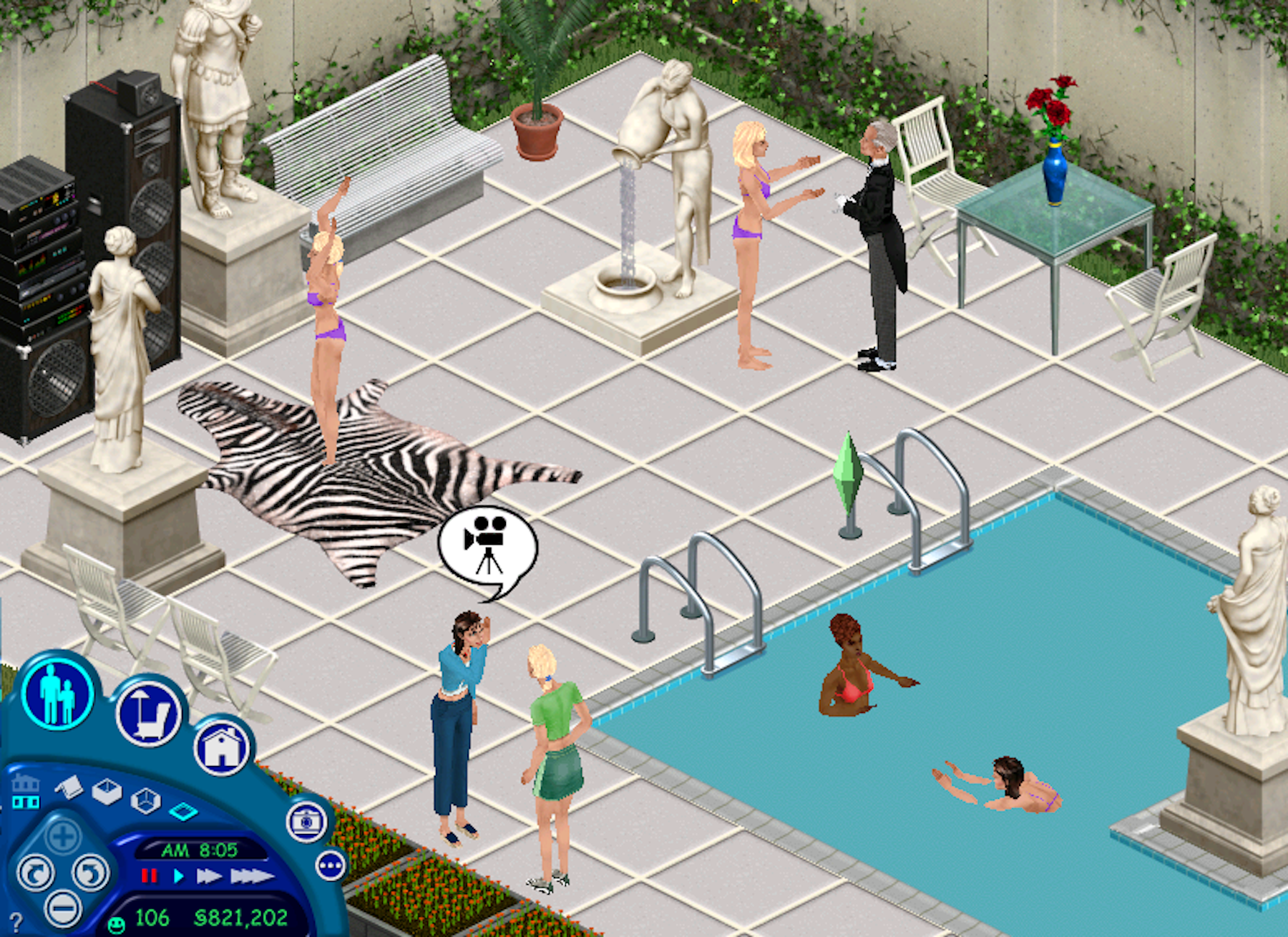
London: The green diamond’s name is the “plumb bob”. I named it the plumb bob because it looks like a plumb bob, which is a piece of lead that you put at the bottom of a string and a carpenter uses it to see if something is plumb. It’s everywhere. It’s the symbol of the game.
We had to have something hovering over the character so we could figure out which one was going to do what we told them to. I made a yellow arrow and extruded it, and it spun around. It was a totally stub piece of art that worked for about a year. But at that point the game only had one floor.
When all the Sims were on the first floor, and you went up to the second floor, you couldn’t see anything. I took the arrow and just made it higher, so the bottom stuck up through the floor. That looked stupid, so I made an octagon and extruded it and then collapsed the ends. Somebody said, “Wouldn’t it be cool if that thing was the colour of their mood?” We hooked that up and then went about our business.
One day, our brilliant executive producer Kana Ryan came to me and was like, “We’re kind of behind and we need to make some decisions. No more art in the game.” I’m like, “That green thing though. That’s not done. Let me just fix it.” She was like, “Live with it.”
I think it’s a lesson in not overthinking simple imagery. If you go to EA now in Redwood Shores [California], there’s a 5.5-foot version of that thing hanging from the ceiling in the lobby, which is pretty cool. I would love to tell you how much thought went into it and how it represents my genius but that’s just not what happened.
The music and sound of ‘The Sims’
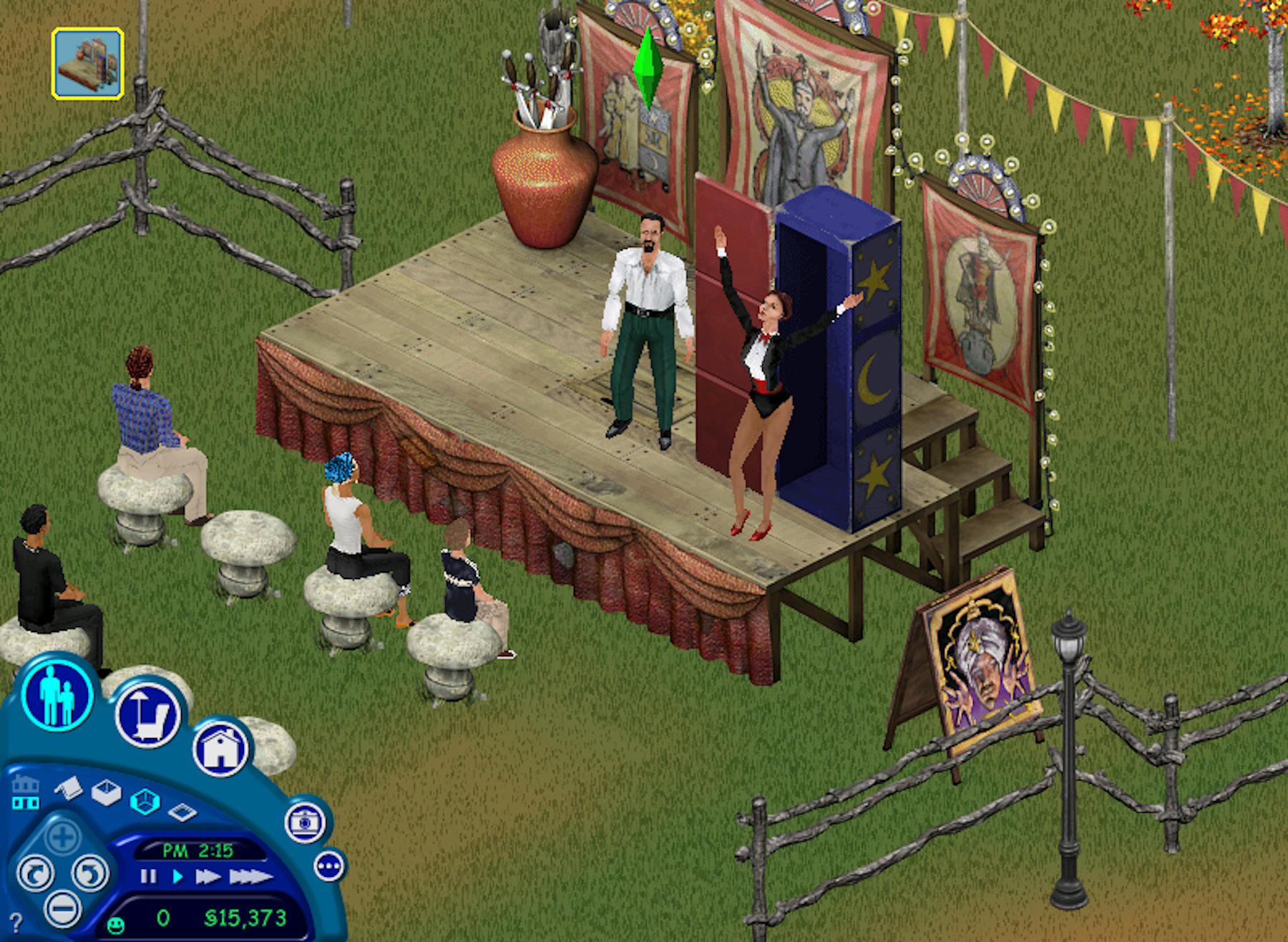
Robi Kauker [sound engineer]: The visuals pushed us to where we ended up. On the music side, I know that Will and Jerry [Martin] talked a lot about that happy, pleasant feeling you got from a lot of early 50s and 60s family shows.
Jerry Martin : A lot of game music at the time was very heavy and hard-hitting. It didn’t seem like it would fit, so I kept it pretty light and humorous. It was the funniest thing I’d worked on. There was a kind of tongue-in-cheek humour, especially with the music. I tried to make the music as authentic as possible, so when it was played against the game it would just seem kind of weird. It was always really funny to me to watch the Sims in their kitchen, with this bossa nova playing as a fire starts!
Will gave me a couple of little things that he thought might be cool. One of them was actually the bossa nova music, which worked out pretty well. He also had the idea of using a new age piano sound for the build music, which everybody really liked. I sort of took the ball and ran with it. It was my idea to do the 50s shopping music for the “buy mode”.
Mainly it was a matter of writing a bunch of songs that seemed to fit. I did a lot of the music in my garage studio at home, which worked out great. If I needed live musicians to make it sound better, then I’d hire them to come and play it.
How Simlish was created
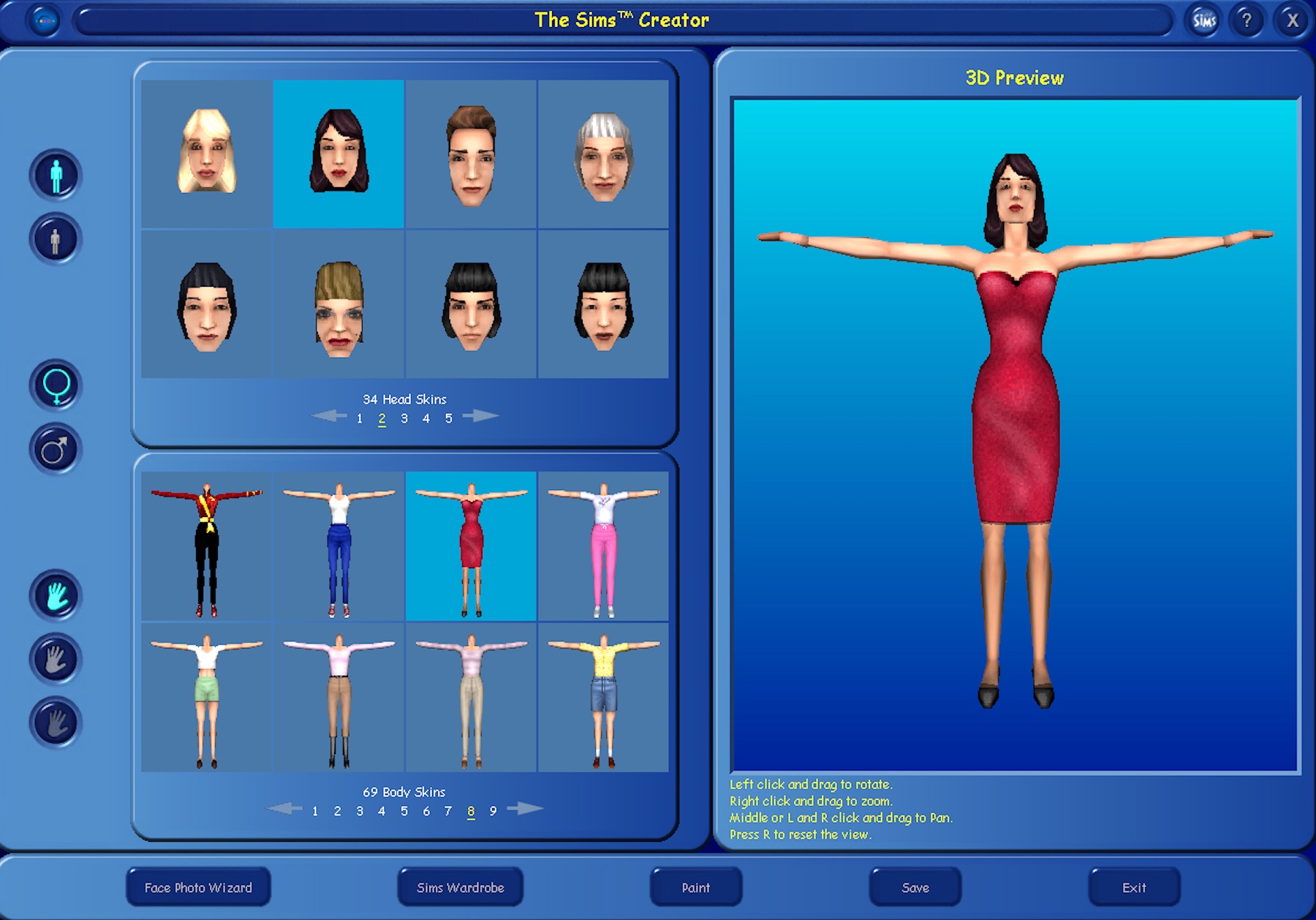
Kauker: Will would come in and throw ideas. The original Simlish idea was “How do we make the Sims talk without saying anything?” That’s what we were left with.
Curtin: We wanted something that was incomprehensible and that you couldn’t follow as a language, so we did a lot of experimentation. Will was very influenced by the Navajo code talkers of World War 2, so we thought maybe we would do it in Navajo but that didn’t pan out. Roxy speaks Ukrainian so we tried to bring in some sounds and scrambled words, but nothing was really gelling.
Stephen Kearin [voice actor]: They took me to a booth out in Walnut Creek. They sat with me while I sat behind the glass, doing a horrible job of trying to merge Cherokee and possibly Swahili. It was tanking. Everything I did wasn’t working. Out of desperation, I remembered an old improv game called “foreign poet”. Someone goes up on stage as the foreign poet, they speak in their language, and then someone interprets their poem for them, so you’re there just improvising gibberish.
We started doing that, take after take. I remember Claire and Robi leaned in and kept cueing up the next one. It seemed like we may have been onto something. Then they asked a golden question: “Do you have a female counterpart who can do what you’re doing?” They didn’t even finish the sentence and I said, “Gerri. Gerri Lawlor.”
For the next 11 years, we sat shoulder to shoulder through all the expansion packs. Whenever I would pick Gerri up from the train station, she would often be in character for the whole drive. She was just an absolute livewire and I couldn’t have done it without her. She brought the very best out of me.
Kauker: Stephen and Gerri were game to take on anything. They were amazing. Everybody was looking for a good feeling rather than a really specific outcome. That made it all possible. And then a year cutting it down and making it all work!
In retrospect, the voice work we did was crazy. After spending a year slicing up language and keeping it connected, there was nothing I couldn’t do with audio.
Some of our biggest words, like “sul sul” or “nooboo” were not quite that cleanly said until it was like “Oh god, I gotta get this down to 30 frames.” It wasn’t a conscious choice!
Issues with EA
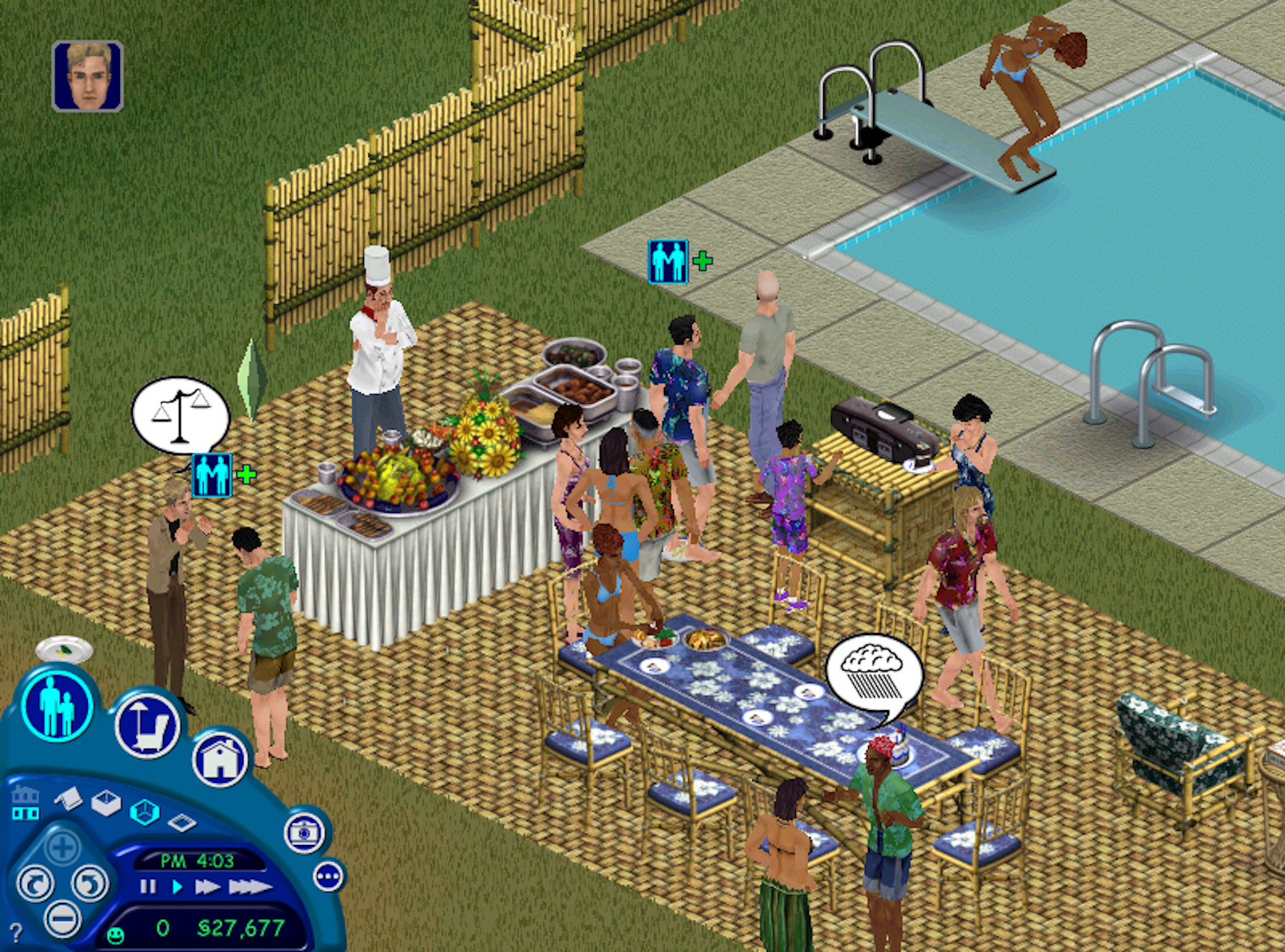
Wolosenko: EA brought a lot of money and marketing to it, so that was nice. In terms of the game itself, it was a struggle because they didn’t have the same core values. They wanted to gamify it more. They wanted to figure out how to make it more “sexy” in a way.
We were a small company; we operated in a completely different way. I felt like we often had to do battle to absolutely refuse some of the things they were saying that we needed to do. It was a little bit of a clash of cultures.
Ryan: They were the enemy. I hate to say it that way, but there was so much scrutiny. We’d have these exec meetings and it was always like we were just fighting for another day. That’s a very good rallying cry for a team.
London: The biggest challenge was getting key stakeholders at EA to understand what it was we were making and why we should be making it. Generally, the opinion was that successful games were about escapism. They were about being somebody else or having powers nobody ever had. This game was the exact opposite of that.
The same thing would happen every time [development director] Jim Mackraz went and showed them the game. They would look at it and be like, “Okay, well that’s kind of interesting, but it’s not a game. The next time we see it, it better have A, B and C.” Jim would say, “Okay, we’ll do that.” Then he’d come back to us and be like, “Okay, we’re not doing anything.” Then we would do X, Y and Z, which were cool and weird.
Martin: At one point, some of the executives didn’t even want to put the game out. But then, when they did and it started making tons of money, a lot more people came over from EA and pretended they were involved with it. It was a bunch of bullshit!
Unexpected success
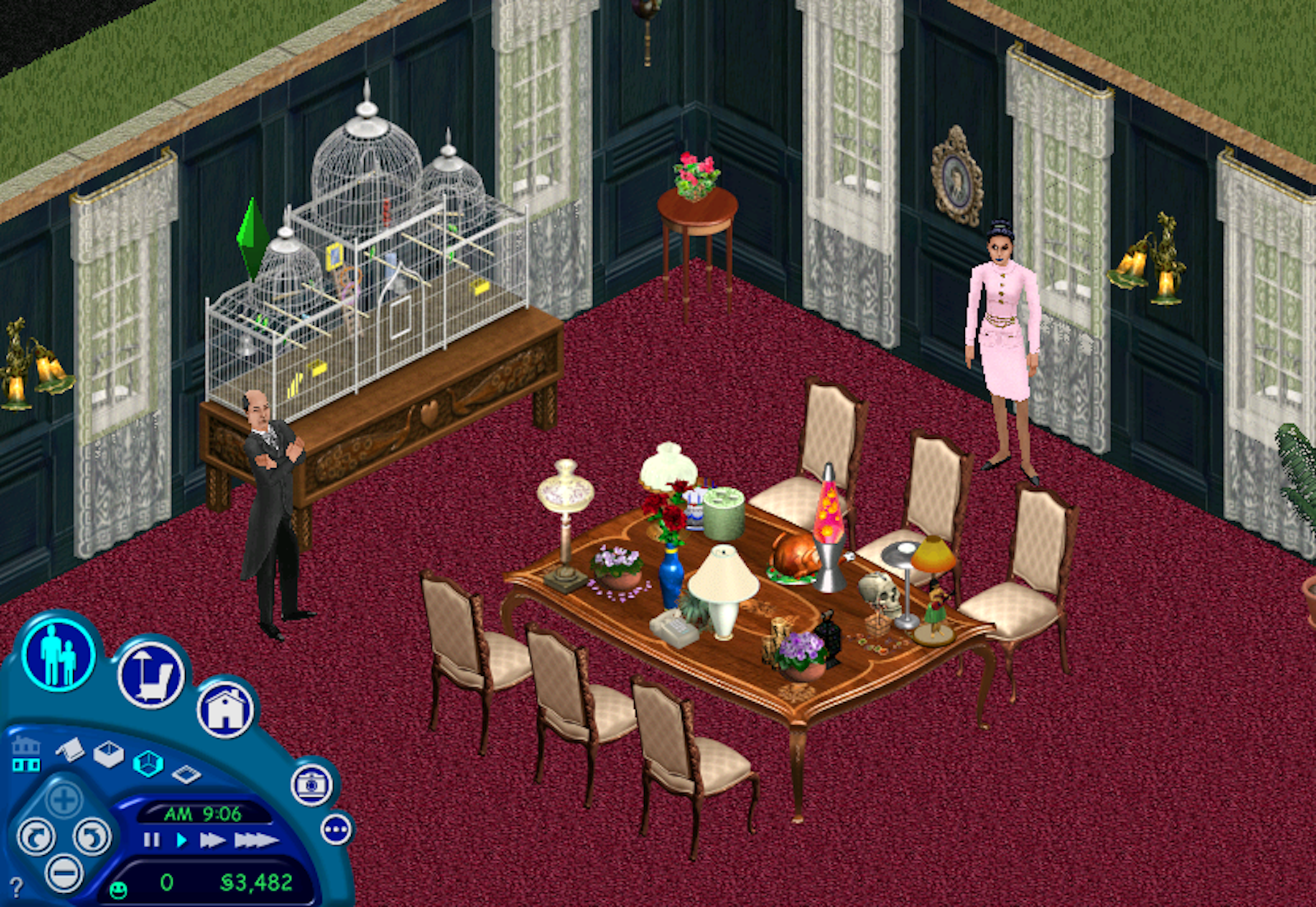
London: It wasn’t until E3 1999 [the world’s largest gaming exhibition], when we were on one machine in the back of the EA demo booth, that word got out. A line formed to see the demo that stretched all the way through the convention centre. Once that happened, everything changed. We became an overnight success after seven years!
Curtin: It was highly adopted by girls and women. I think the traditional gaming audience that was around in those days was interested in it because of its SimCity roots. If they didn’t enjoy it that was okay because there were many other new people, who would never have bought a computer game, who did.
Wolosenko: We never set out to make this a game that was popular with girls at all. We were just making a game that was interesting to us. Girls just ended up finding it. It had all this interesting depth that wasn’t present in a lot of other games.
Doornbos: A lot of games were based on destruction. SimCity was about construction. Then we added this ability to create a family and watch what happens. It tapped into part of our psyche that hadn’t been tapped into before, which was about empathy and identifying with people.
Kearin: None of us would have ever predicted what it became. Never in our wildest dreams. I remember once they told us there was no time during the day or night, 24 hours a day, 365 days a year, that our voices were not being heard somewhere in the world.
Martin: I remember going to one of our company meetings where they were talking about the money that was being made. I just went, “Holy shit! You’ve got to be kidding me?” I couldn’t believe it.
The aftermath and legacy of ‘The Sims’
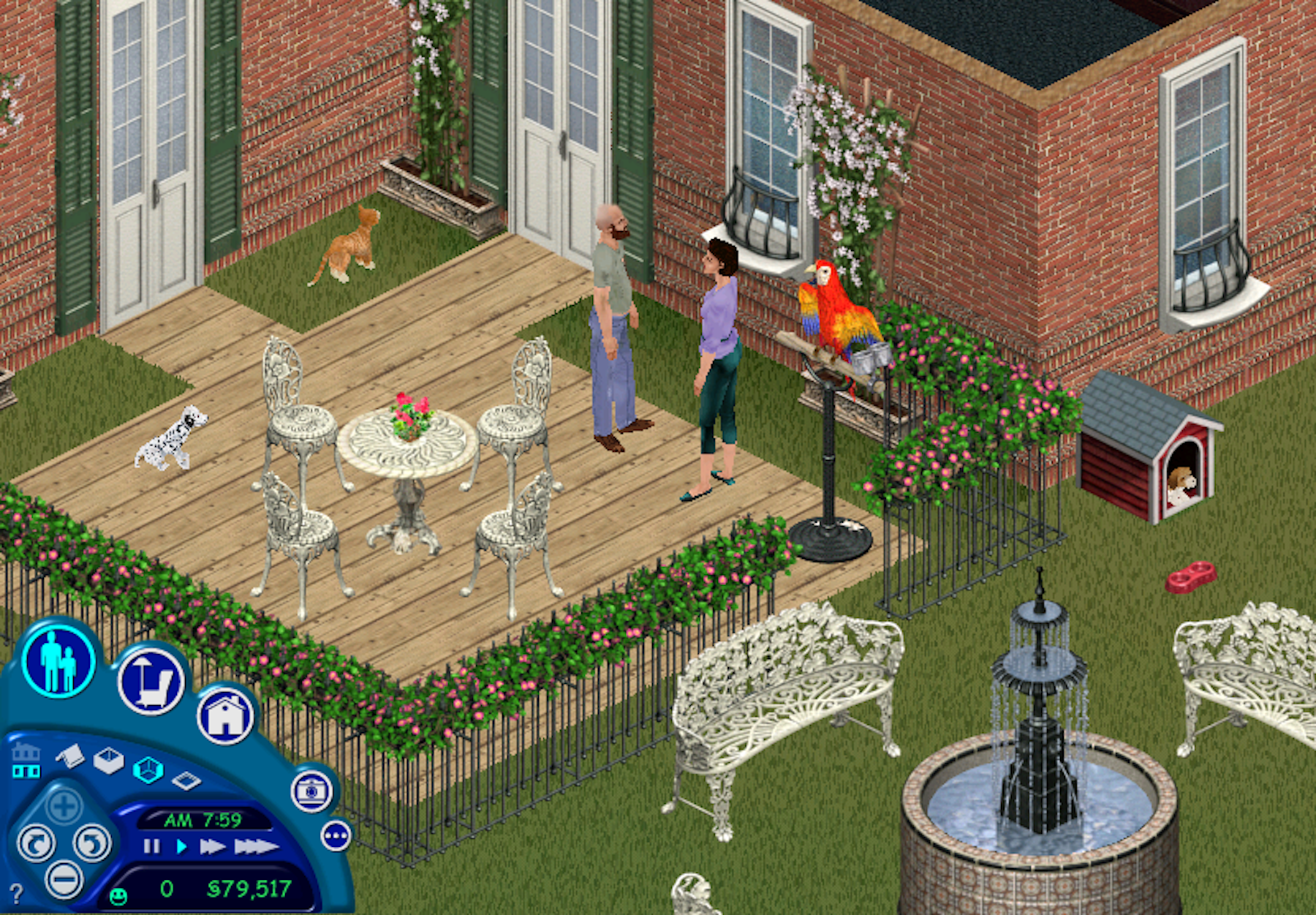
Curtin: The Sims had soul. You can see the importance it had in the lives of the people who took it on. They were acting out their real lives, or a life they wish they had. I’m very proud of everything we did on that game.
Kearin: The Sims was a form of safety and escape. It’s another world. I think we all need another world because at times this one isn’t doing the job. It felt like I paddled out and caught this crazy wave, that I’m still kind of on, just by dumb luck. It feels terrific, especially when I hear people express how much it meant to their childhood. You can’t do better than that. It’s been a total honour to be part of it.
Kauker: I think it was just so different. There’s no right way to play. Nobody’s scoring you. Nobody’s judging you. It’s a sandbox where your storytelling, ideas, sense of humour and choices, matter. At this point in the game’s development, it’s like we have a whole generation who have never lived in a world without The Sims. It’s been in constant production. It’s kind of spectacular.
London: I think the game’s true magic is that it allows the player to inhabit both the storyteller and the audience role, almost simultaneously, in a fluid back and forth. That’s why, along with just the sheer machine of content that you can’t try to match, it’s really had no competition. It’s been a one-game genre for 20 plus years.
Ryan: Not a lot of games have that kind of lasting power. I think there’s something charming to people about the game, especially the first one. It’s rare that there’s a brand new idea. This was one of the first truly casual games. It was accessible to people. Everybody’s got a Sims story. I think there was just something magical about it – it’s truly one of the highlights of my career and life.
More
From VICE
-
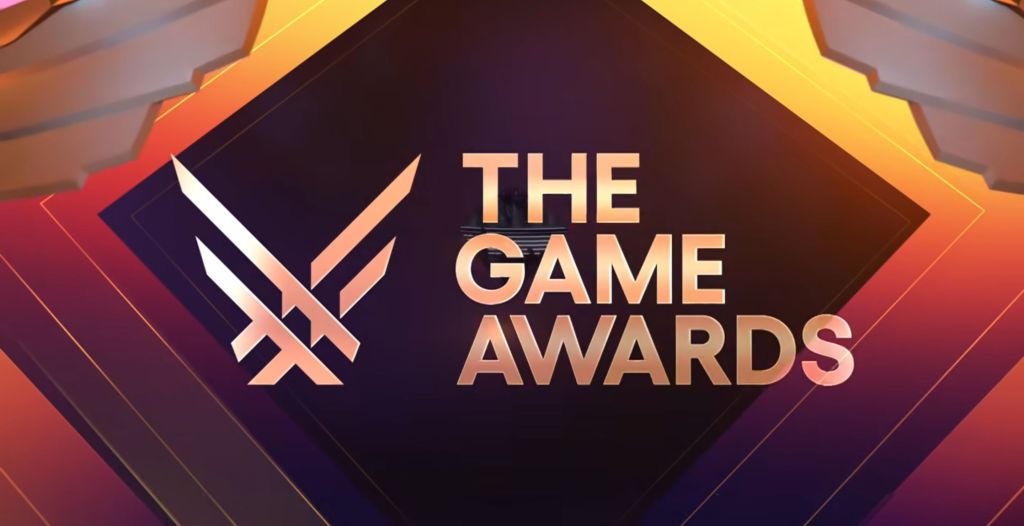
Screenshot: The Game Awards -
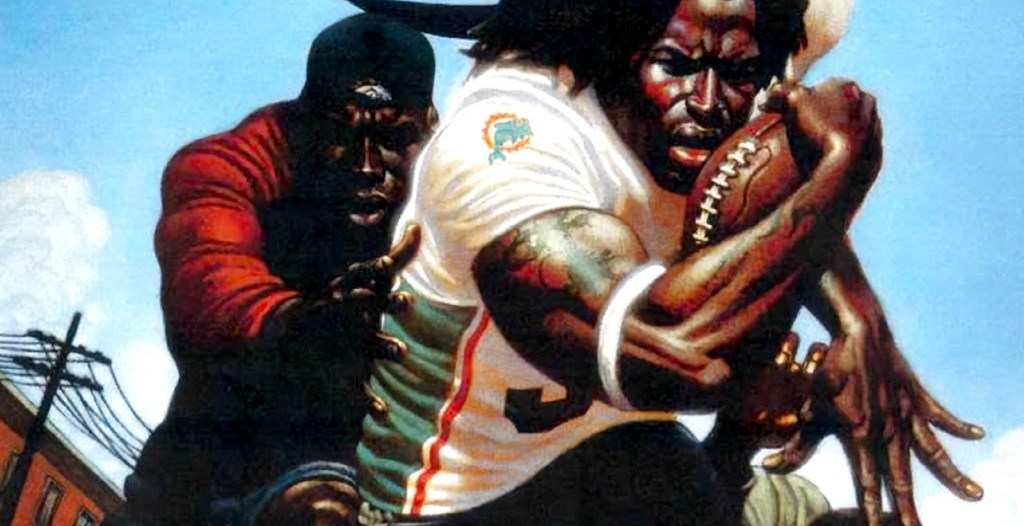
Screenshot: EA Sports BIG -

Screenshot: Shaun Cichacki -
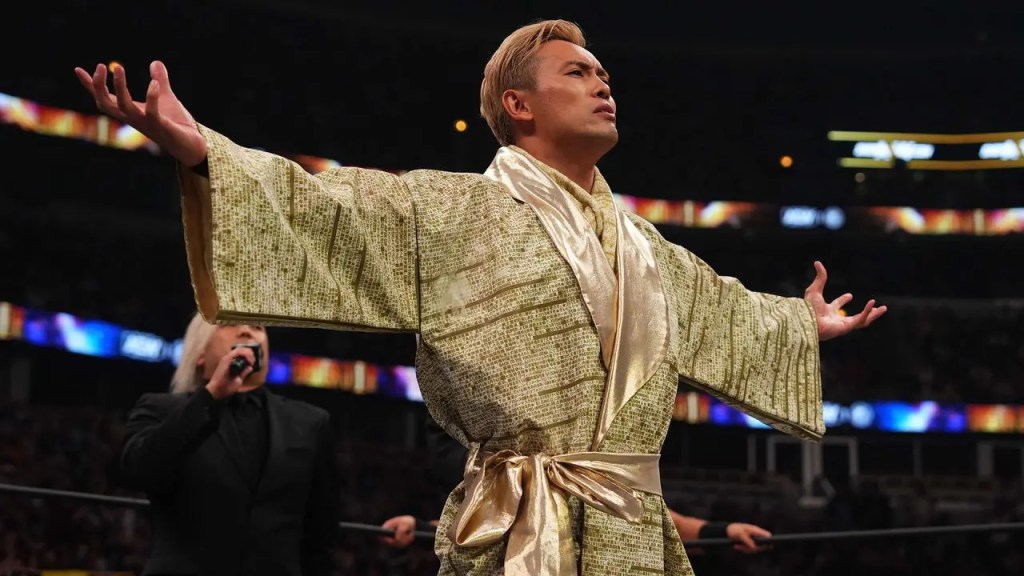
AEW

